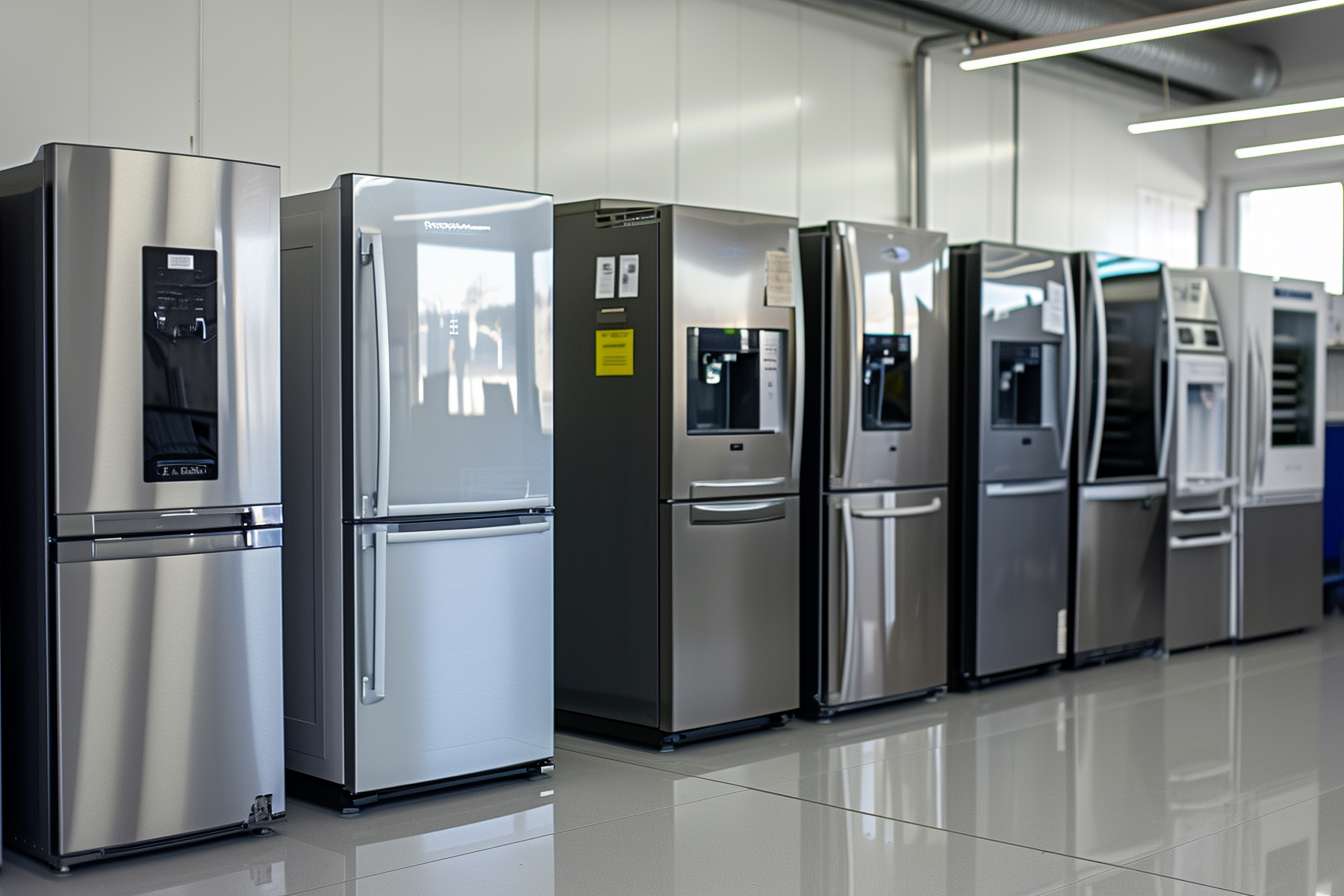How to Choose the Best Refrigerator for Your Home’s Needs
Refrigerators are essential appliances that keep food fresh, reduce waste, and fit seamlessly into modern kitchens. With advancements in technology, today’s models offer energy efficiency, smart connectivity, and customizable storage options. Whether you’re upgrading an old unit or selecting your first refrigerator, understanding key features—such as capacity, cooling systems, and eco-friendly designs—can help you make the best choice. This guide explores the latest trends in refrigeration, compares different types, and provides tips for maintaining optimal performance.

What factors should you consider when choosing a refrigerator size?
Choosing the right size refrigerator is paramount for both functionality and aesthetics. Start by measuring the available space in your kitchen, including width, depth, and height. Don’t forget to account for door swing and ventilation requirements. A general rule of thumb is to allocate 4-6 cubic feet of interior space per adult in your household. For a family of four, this translates to a refrigerator with 16-24 cubic feet of capacity. Consider your shopping and cooking habits as well; if you frequently entertain or buy in bulk, you may need more space. Remember that larger refrigerators consume more energy, so balance your storage needs with energy efficiency goals.
How do energy-efficient refrigerators benefit your home and budget?
Energy-efficient refrigerators offer significant benefits for both the environment and your wallet. Look for models with the ENERGY STAR certification, which use about 15% less energy than non-certified models. These refrigerators often feature improved insulation, more efficient compressors, and precise temperature controls. While they may have a higher upfront cost, energy-efficient models can save you hundreds of dollars in electricity bills over their lifetime. Additionally, many utility companies offer rebates for purchasing ENERGY STAR appliances, further offsetting the initial investment. By choosing an energy-efficient refrigerator, you’re not only reducing your carbon footprint but also enjoying long-term savings on your energy costs.
What are the advantages of smart fridge technology?
Smart fridges represent the cutting edge of refrigerator technology, offering a range of benefits that can streamline your kitchen management. These high-tech appliances often feature built-in cameras that allow you to check the contents of your fridge remotely via smartphone apps. This can be particularly useful when grocery shopping, helping you avoid buying items you already have. Many smart fridges also include touchscreen displays for creating shopping lists, setting expiration date reminders, and even streaming recipes or music while you cook. Some models can integrate with your smart home ecosystem, allowing voice control and synchronization with other appliances. While these features come at a premium, they can significantly enhance your kitchen’s efficiency and reduce food waste.
How do French door and side-by-side refrigerators compare?
French door and side-by-side refrigerators are two popular styles, each with distinct advantages. French door models feature a two-door refrigerator compartment on top and a freezer drawer below. This design allows for wider shelves that can accommodate large platters and pizza boxes, making it ideal for entertainers. The drawer-style freezer provides better organization and easier access to frozen items. Side-by-side refrigerators, on the other hand, have the fridge and freezer compartments running vertically side-by-side. This style offers more freezer space and is well-suited for narrower kitchens due to its smaller door swing. However, the narrower compartments may struggle to fit larger items. Consider your kitchen layout, storage preferences, and the types of food you typically keep when choosing between these styles.
What are some essential tips for proper refrigerator maintenance?
Proper maintenance is key to extending the life of your refrigerator and ensuring optimal performance. Regular cleaning of the interior, including shelves and drawers, prevents odors and bacterial growth. Clean the condenser coils at least twice a year to maintain efficiency; these are typically located at the back or bottom of the unit and can be accessed by removing a grille. Check and clean the door seals regularly to prevent air leaks, which can cause the compressor to work harder. Maintain the ideal temperature range of 37-40°F (2.8-4.4°C) for the fridge and 0°F (-18°C) for the freezer to preserve food quality and prevent spoilage. Lastly, avoid overloading your refrigerator, as this can impede air circulation and reduce cooling efficiency.
How much should you expect to spend on a quality refrigerator?
When budgeting for a new refrigerator, it’s important to consider both the initial cost and long-term energy savings. Prices can vary widely based on size, features, and brand. Here’s a general overview of what you might expect to pay:
| Refrigerator Type | Size Range | Price Range (USD) |
|---|---|---|
| Top Freezer | 11-24 cu. ft. | $500 - $1,500 |
| Bottom Freezer | 18-25 cu. ft. | $1,000 - $2,500 |
| Side-by-Side | 20-28 cu. ft. | $1,200 - $3,000 |
| French Door | 20-30 cu. ft. | $1,500 - $4,000+ |
| Smart Refrigerators | 22-30 cu. ft. | $2,500 - $7,000+ |
Prices, rates, or cost estimates mentioned in this article are based on the latest available information but may change over time. Independent research is advised before making financial decisions.
Basic models with fewer features tend to be more affordable, while high-end smart refrigerators with advanced technologies command premium prices. Energy-efficient models may have a higher upfront cost but can lead to significant savings on utility bills over time. When shopping, consider both the purchase price and the estimated annual energy cost provided on the EnergyGuide label to get a complete picture of the refrigerator’s total cost of ownership.
In conclusion, choosing the best refrigerator for your home involves carefully considering your space constraints, energy efficiency needs, desired features, and budget. By weighing factors such as size, style, and technological capabilities against your household’s specific requirements, you can select a refrigerator that not only keeps your food fresh but also enhances your kitchen’s functionality and aesthetics. Remember to factor in long-term energy costs and maintenance needs to ensure your choice remains satisfactory for years to come.




